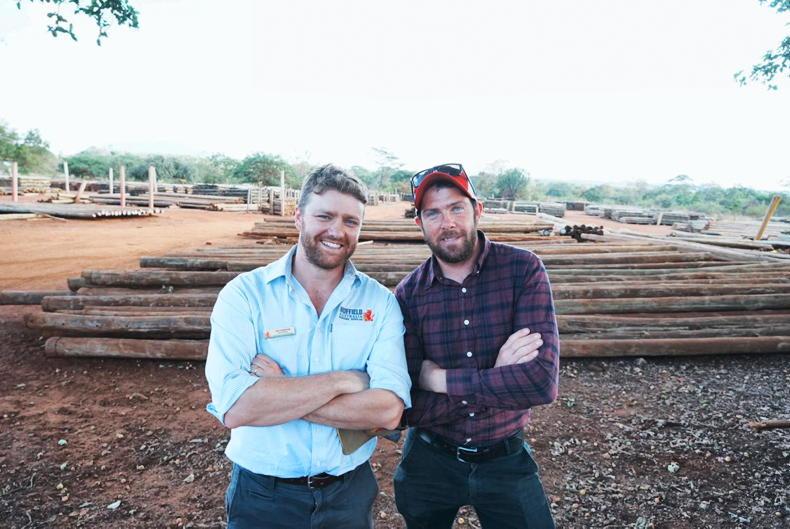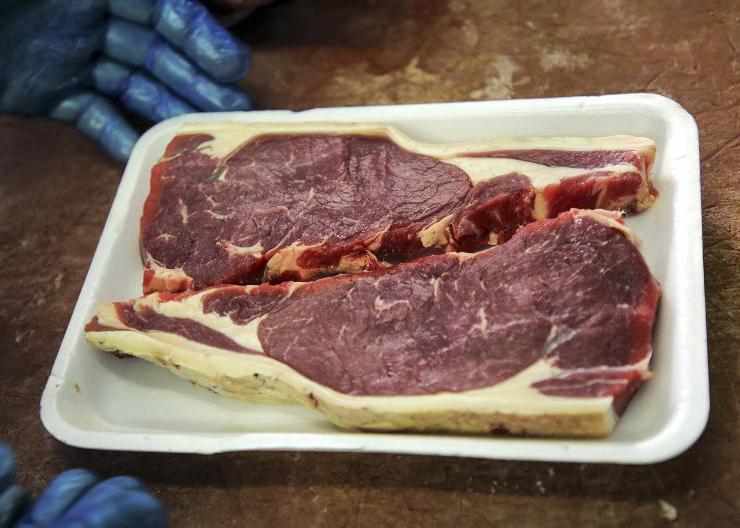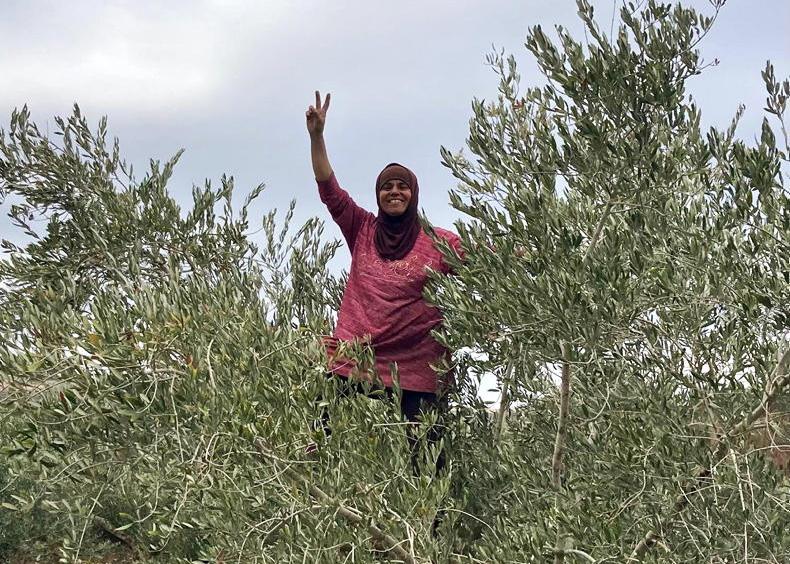Growing winter wheat for the 2024 harvest was a very frustrating farming experience- for those who did get to grow it.
Horrendously tough autumn establishment conditions and relentless spring rain had already tested crops’ resilience, and low early summer sunshine levels leading to modest grain filling conditions meant mediocre yields and a poor outcome.
This experience followed on from the high disease pressure and tough harvest weather of the 2023 season – so a high-cost crop to grow and a high-cost harvest could describe it. The bountiful, barn-busting wheat crop of summer 2022 has naturally been fading from the memory after such recent experiences.
Winter wheat is a tough crop to grow successfully in Ireland and some of our best cereal farmers across the south of the country have made the very pragmatic decision in recent decades that it’s not the crop for them.
But Irish farms can consistently grow some of the highest wheat yields in the world – when things go right with soil, crop and weather – and many cereal farmers locally are still very motivated to grow high yielding wheat crops. And yes, you can think 14-15t/ha as a best field yield – it’s possible!
Costs
Costs are a big factor in cereal production since 2022 and wheat is the highest cost cereal crop. ‘Low’ input winter wheat production is lower cost but is also lower yielding, so invariably lower profit and also lower quality – it was my PhD thesis topic back in the day – and the fundamentals driving this have not changed. In fact they are more stark in 2025 in favour of higher inputs.
Why? The secret of winter wheat production in a cool, moist climate is to fully exploit its very high genetic potential on good land. The approach is simple: minimise all the limiting factors you have under your control. A farmer has control of crop density, crop nutrition and crop protection and all three need to be done properly and professionally.
Disease control
Disease control is a key part of wheat production in our climate and it’s not easy – it’s tricky and challenging. Reduced fungicide sensitivity to septoria is a reality of the last 10-15 years and thi, combined with the loss of chlorothalonil, makes things difficult.
Also, varieties being grown currently and into the future in Ireland are all best described as moderately susceptible to the disease (it’s fair to term them as moderately resistant too).
So what makes for a good fungicide programme? It’s four sprays for wheat sown before mid-October, with a T0 and three well-timed T1 to T3 sprays at classical timings.
Each spray is important and each from T1 to T3 is a proper treatment. Otherwise it’s unnecessary and uncalculated risk-taking with yield quality and profit.
If one wants low/reduced fungicide inputs for wheat, then realistically it has to be a late-sown winter crop or a spring wheat crop.
So, is a robust fungicide programme in 2025 always going to result in high levels of disease control? It depends. Good spray timings and intervals are hugely important, much more important than 15-20 years ago as all of the current fungicides are much less curative – curativity has been the fungicide activity most lost as resistance strains of septoria have evolved.
Also, minimising the build-up of disease inoculum is really important, so delaying the disease getting to the top three leaves means the T0 / T1 part of the programme needs to be well executed.

Septoria on winter wheat.
Fungicide choice
Fungicide choice is limited, so absolutely all fungicide modes of action should be in the programme. Inatreq has to be included as the highest performing current active ingredient and while it’s flexible as a T1 or T2 option, its best cost benefits are as a T2.
Triazole chemistry has been centrally important in wheat disease control for five decades and Metfentrifluconazole – Revystar – is the best triazole on septoria so it goes into the programme, and it’s very flexible on timing at T1 or T2.
Prothioconazole is a remarkable triazole fungicide and while its septoria control is now moderate on a good day, it’s still strong on other diseases including eyespot (T1) and the ear disease complex (T3). Many of the Prothio +SDHI fungicide products are well formulated for wheat.
Folpet is not chlorothalonil – and does not offer its cost benefit win-win – but it’s a good reliable contact fungicide partner which is very consistent in every fungicide programme trial study in reducing disease on all leaf layers in the canopy.
So, building the fungicide programme requires getting the best chemistry into the programme in good combinations and at good intervals and timings.
There are four key leaves in the wheat canopy and all need good protection. The focus for T0 and T1 is on the lower leaf canopy – leaf 3 and also leaf 4. For T2 and T3, it’s the upper canopy and ear. Well-timed fungicide applications will give good protection and minimise the need for a curative effect from each fungicide treatment applied.
Extended periods of unsettled and wet weather in early summer are problematic for two reasons: they result in higher disease pressure and also can delay spraying, causing extended spray intervals and poorly timed or late treatments.
The key approach in this scenario is flexibility of thinking and decisive decision making – react quickly and make a pragmatic decision to tweak a fungicide rate or mixture to give a bit more robustness to the fungicide treatment if it’s late or is going on a crop at higher disease risk.
If the weather is settled and benign for wet weather diseases in early summer, then the equally pragmatic approach is to carefully tweak fungicide rates lower and maybe let spray intervals drift a little. This ensures there is flexibility in both as a good agronomic strategy.
Genetic resistance
Genetic resistance to disease in winter wheat is a hugely important part of having a good disease control outcome in our cool, moist climate, but the reality is we are growing high yielding varieties with very high genetic merit which are prone to a range of high-risk fungal pathogens.
These pathogens, like septoria and yellow rust, have a high evolution potential to produce new and more complex and adapted pathogen populations and this makes the best varieties more vulnerable than ever.
This is starkly outlined in the accompanying grain yield data from a 2024 Prime Agriculture winter wheat fungicide x variety trial on a grade 1 farm site in East Anglia where the 29 leading wheat varieties were tested with and without a four-spray fungicide programme.
It was astonishing at this trial to watch the leading varieties succumb to yellow rust, septoria and then brown rust pressure over a six to eight-week period but it’s also a reality of modern crop-disease-climate dynamics.
Where fungicides were well-timed and used at good rates on the treated plots, the disease control was excellent – 95-99% control of all three diseases being achieved across the fungicide programme, with the cost of the fungicide programme being about 0.8t/ha equivalent.

Champion winter wheat.
Successful disease control in winter wheat is not easy. It requires buy-in and a high level of commitment. It is challenging to do it correctly and also requires an optimism that the summer can deliver a good outcome. Once you have sown a wheat crop, you have made the commitment to doing it properly.
Dabbling with weaker fungicide chemistry and lower rates and extended intervals and half-hearted T3 sprays is not an approach that carries anything but uncalculated risk and uncertainty, and is asking for a bad outcome.
There are cereal crops where these approaches may work, but I can’t go there for winter wheat and won’t vouch for any of them. So, the message is to use the tried and trusted concentrate on a good, well-timed technically sound fungicide programme to give the crop every opportunity to realise its very high genetic potential.
Growing winter wheat for the 2024 harvest was a very frustrating farming experience- for those who did get to grow it.
Horrendously tough autumn establishment conditions and relentless spring rain had already tested crops’ resilience, and low early summer sunshine levels leading to modest grain filling conditions meant mediocre yields and a poor outcome.
This experience followed on from the high disease pressure and tough harvest weather of the 2023 season – so a high-cost crop to grow and a high-cost harvest could describe it. The bountiful, barn-busting wheat crop of summer 2022 has naturally been fading from the memory after such recent experiences.
Winter wheat is a tough crop to grow successfully in Ireland and some of our best cereal farmers across the south of the country have made the very pragmatic decision in recent decades that it’s not the crop for them.
But Irish farms can consistently grow some of the highest wheat yields in the world – when things go right with soil, crop and weather – and many cereal farmers locally are still very motivated to grow high yielding wheat crops. And yes, you can think 14-15t/ha as a best field yield – it’s possible!
Costs
Costs are a big factor in cereal production since 2022 and wheat is the highest cost cereal crop. ‘Low’ input winter wheat production is lower cost but is also lower yielding, so invariably lower profit and also lower quality – it was my PhD thesis topic back in the day – and the fundamentals driving this have not changed. In fact they are more stark in 2025 in favour of higher inputs.
Why? The secret of winter wheat production in a cool, moist climate is to fully exploit its very high genetic potential on good land. The approach is simple: minimise all the limiting factors you have under your control. A farmer has control of crop density, crop nutrition and crop protection and all three need to be done properly and professionally.
Disease control
Disease control is a key part of wheat production in our climate and it’s not easy – it’s tricky and challenging. Reduced fungicide sensitivity to septoria is a reality of the last 10-15 years and thi, combined with the loss of chlorothalonil, makes things difficult.
Also, varieties being grown currently and into the future in Ireland are all best described as moderately susceptible to the disease (it’s fair to term them as moderately resistant too).
So what makes for a good fungicide programme? It’s four sprays for wheat sown before mid-October, with a T0 and three well-timed T1 to T3 sprays at classical timings.
Each spray is important and each from T1 to T3 is a proper treatment. Otherwise it’s unnecessary and uncalculated risk-taking with yield quality and profit.
If one wants low/reduced fungicide inputs for wheat, then realistically it has to be a late-sown winter crop or a spring wheat crop.
So, is a robust fungicide programme in 2025 always going to result in high levels of disease control? It depends. Good spray timings and intervals are hugely important, much more important than 15-20 years ago as all of the current fungicides are much less curative – curativity has been the fungicide activity most lost as resistance strains of septoria have evolved.
Also, minimising the build-up of disease inoculum is really important, so delaying the disease getting to the top three leaves means the T0 / T1 part of the programme needs to be well executed.

Septoria on winter wheat.
Fungicide choice
Fungicide choice is limited, so absolutely all fungicide modes of action should be in the programme. Inatreq has to be included as the highest performing current active ingredient and while it’s flexible as a T1 or T2 option, its best cost benefits are as a T2.
Triazole chemistry has been centrally important in wheat disease control for five decades and Metfentrifluconazole – Revystar – is the best triazole on septoria so it goes into the programme, and it’s very flexible on timing at T1 or T2.
Prothioconazole is a remarkable triazole fungicide and while its septoria control is now moderate on a good day, it’s still strong on other diseases including eyespot (T1) and the ear disease complex (T3). Many of the Prothio +SDHI fungicide products are well formulated for wheat.
Folpet is not chlorothalonil – and does not offer its cost benefit win-win – but it’s a good reliable contact fungicide partner which is very consistent in every fungicide programme trial study in reducing disease on all leaf layers in the canopy.
So, building the fungicide programme requires getting the best chemistry into the programme in good combinations and at good intervals and timings.
There are four key leaves in the wheat canopy and all need good protection. The focus for T0 and T1 is on the lower leaf canopy – leaf 3 and also leaf 4. For T2 and T3, it’s the upper canopy and ear. Well-timed fungicide applications will give good protection and minimise the need for a curative effect from each fungicide treatment applied.
Extended periods of unsettled and wet weather in early summer are problematic for two reasons: they result in higher disease pressure and also can delay spraying, causing extended spray intervals and poorly timed or late treatments.
The key approach in this scenario is flexibility of thinking and decisive decision making – react quickly and make a pragmatic decision to tweak a fungicide rate or mixture to give a bit more robustness to the fungicide treatment if it’s late or is going on a crop at higher disease risk.
If the weather is settled and benign for wet weather diseases in early summer, then the equally pragmatic approach is to carefully tweak fungicide rates lower and maybe let spray intervals drift a little. This ensures there is flexibility in both as a good agronomic strategy.
Genetic resistance
Genetic resistance to disease in winter wheat is a hugely important part of having a good disease control outcome in our cool, moist climate, but the reality is we are growing high yielding varieties with very high genetic merit which are prone to a range of high-risk fungal pathogens.
These pathogens, like septoria and yellow rust, have a high evolution potential to produce new and more complex and adapted pathogen populations and this makes the best varieties more vulnerable than ever.
This is starkly outlined in the accompanying grain yield data from a 2024 Prime Agriculture winter wheat fungicide x variety trial on a grade 1 farm site in East Anglia where the 29 leading wheat varieties were tested with and without a four-spray fungicide programme.
It was astonishing at this trial to watch the leading varieties succumb to yellow rust, septoria and then brown rust pressure over a six to eight-week period but it’s also a reality of modern crop-disease-climate dynamics.
Where fungicides were well-timed and used at good rates on the treated plots, the disease control was excellent – 95-99% control of all three diseases being achieved across the fungicide programme, with the cost of the fungicide programme being about 0.8t/ha equivalent.

Champion winter wheat.
Successful disease control in winter wheat is not easy. It requires buy-in and a high level of commitment. It is challenging to do it correctly and also requires an optimism that the summer can deliver a good outcome. Once you have sown a wheat crop, you have made the commitment to doing it properly.
Dabbling with weaker fungicide chemistry and lower rates and extended intervals and half-hearted T3 sprays is not an approach that carries anything but uncalculated risk and uncertainty, and is asking for a bad outcome.
There are cereal crops where these approaches may work, but I can’t go there for winter wheat and won’t vouch for any of them. So, the message is to use the tried and trusted concentrate on a good, well-timed technically sound fungicide programme to give the crop every opportunity to realise its very high genetic potential.












SHARING OPTIONS